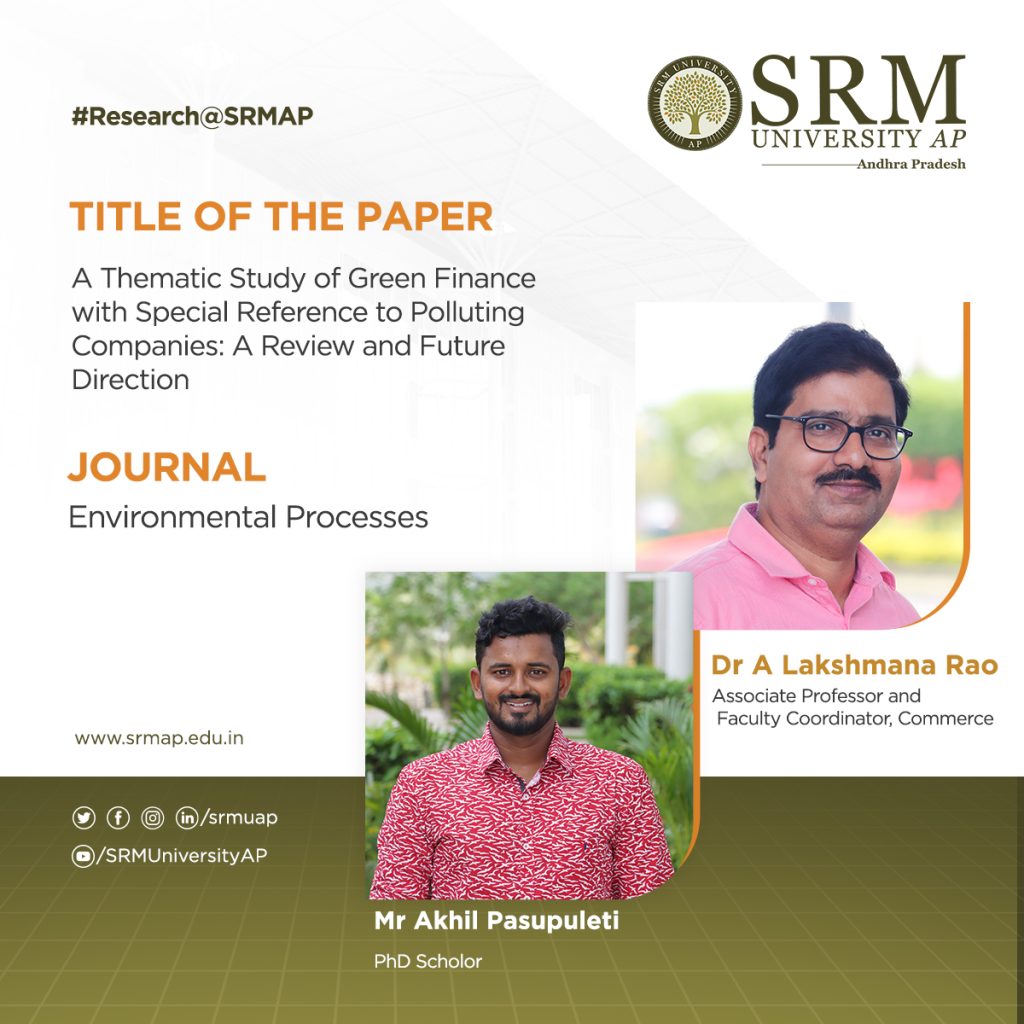Tracking the growth of health expenditure in the Middle East

Middle East countries are characterized by a growing burden of chronic diseases such as diabetes, cancer, cardiovascular diseases, and respiratory diseases in recent times. These are health conditions that require regular access to care in order to lower their morbidity and mortality burden. Hence, healthcare-focused research and development spending has the potential to uncover new methods for the diagnosis and treatment of different health conditions, lower their cost of care, along with reducing morbidity and mortality burden in the population.
Having conducted comprehensive research in this regard, an article titled “Predicting Key Drivers for Health Care Expenditure Growth in the Middle East Region: A Grossman-PLS Modeling Approach” has been published by Dr Shailender Singh and his PhD scholar Mr Muhammad Muazu Bala from the Department of Commerce. It was published in the Journal, ‘Expert Review of Pharmacoeconomics & Outcomes Research’ having an Impact Factor of 2.31. The research was led in collaboration with Dr Nishant Kumar from Amity University, Noida.
The results obtained from the study show that the supply side of care (HSCI) has contributed more than the demand side (SDI) in determining the overall level of health care expenditure of the Middle East countries. This implied that massive investment targeted at achieving high-quality healthcare systems is more noticeable in determining the overall level of health care expenditure. Though progress towards a high-quality health system is a desirable health care goal, particularly for LMICs (Low- and middle-income countries), available evidence shows that expenditure on research and development is quite low.
The study recommends an expansion of health insurance coverage to induce greater utilization of health care services particularly among the aging cohort of the population. The promoters of Universal Health Coverage (UHC) such as the World Health Organization (WHO) and the World Bank have emphasized that obtaining health insurance coverage will induce greater access to health services without facing financial hardships. In line with the findings of this study, since real wage is statistically significant, mandatory employment-based health insurance may induce greater utilization of health services and provide financial risk protection for formal sector employees.
However, this alone will not suffice to achieve greater improvement in health outcomes, especially for LMICs characterized by the largest share of informal sector employment. Thus, other forms of health insurance such as community–based health insurance may help to cover the informal sector and the vast segment of the population that lives in rural areas. Moreover, other pro-poor publicly financed health care payment mechanisms could be a promising path for promoting access to health services and guaranteeing financial risk protection for the poor.

The research infers that health system stakeholders in the Middle East should prioritize exploiting the available resources for strengthening the capacity of their health systems. Also, available data shows that expenditure on research and development is quite low and thus should be considerably increased so that new inventions, innovations, and discoveries could be unleashed for better understanding, treatment, and diagnosis of different health conditions for improving health outcomes.
Abstract of the Research
Initially, this study provides empirical evidence to the Grossman theoretical model using macro-level panel data for 15 countries of the Middle East region from 2000 through 2016. During the second phase, contradistinction analysis is executed and a parallel model of the demand for care as a function of health system capacity indicators is estimated. Lastly, for robustness checks, a new predictive model is developed carrying forward the outcome from Grossman and the parallel models. A variance-based partial least square structural equation modeling (PLS-SEM) is applied to analyse the interaction between health expenditure and the latent construct: socio-demographic factor and health system capacity. Results elucidate that the relative wage rate and the ageing variables are the only indicators that are statistically significant with theoretically consistent signs as postulated by Grossman’s theoretical model. The exact opposite is true with schooling and the proxy of the medical care relative prices. However, in the parallel model, all the four drivers of the demand for care are statistically significant with robust standard errors. Therefore, the Middle East’s data has comparatively a better fit in the parallel model than it does in the Grossman model. Also, the integrated estimation model supports the results of the separate models.
- Published in Commerce Current Happenings, Departmental News, News, Research News
A Thematic Study on Green Finance
 Today, we live in a world where sustainability and sustainable development are the need of the hour and amidst this, Associate Professor, Dr A Lakshmana Rao and Research Scholar, Mr Akhil Pasupuleti from the Department of Commerce have come up with their pacesetting research publication titled – “A Thematic Study of Green Finance with Special Reference to Polluting Companies: A Review and Future Direction.” The research work gives an impetus to many polluting companies to adopt green finance as an option to combat environmental pollution, this can be in the form of business strategy, energy saving, green credit, and innovation.
Today, we live in a world where sustainability and sustainable development are the need of the hour and amidst this, Associate Professor, Dr A Lakshmana Rao and Research Scholar, Mr Akhil Pasupuleti from the Department of Commerce have come up with their pacesetting research publication titled – “A Thematic Study of Green Finance with Special Reference to Polluting Companies: A Review and Future Direction.” The research work gives an impetus to many polluting companies to adopt green finance as an option to combat environmental pollution, this can be in the form of business strategy, energy saving, green credit, and innovation.
Abstract
The objective of the study was to understand the phenomenon of green finance in polluting companies through a systematic literature review. The methodology involves the search, selection, classification, and categorisation of thirty-five articles on green finance in polluting companies which were analysed for the time span of eleven years, i.e., 2011–2022. The outcome of the review identified the following five themes: (i) green credit and environmental protection; (ii) green finance and green innovation; (iii) green innovation and environmental protection; (iv) green finance and investment; and (v) green innovation and firm performance. The review has put forward recommendations for further advancement in policy strengthening and the utilisation of extensive data analysis, indicating potential avenues for future research and development. The findings of the study provide insights to researchers, practitioners, and policymakers about the status of green finance in polluting companies.
Dr Lakshmana Rao Ayyagari and his student Mr Akhil Pasupuleti are working on developing future prospects of Green Finance such as ESG disclosure and reporting practices, its application and the relationship of CSR and sustainability.
- Published in Commerce Current Happenings, Departmental News, News, Research News
- 1
- 2

